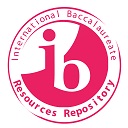Focus group: The use of ecstasy
 The following is a sample Paper 3 that looks at focus groups. Below you will first find the stimulus piece, followed by the static questions. A copy of the mock paper is included to give students as an in-class assessment.
The following is a sample Paper 3 that looks at focus groups. Below you will first find the stimulus piece, followed by the static questions. A copy of the mock paper is included to give students as an in-class assessment.
The mark scheme below is created by me and is not an official IB document.
Potential answers are included in the hidden boxes below.
Stimulus piece
This study examined ecstasy use in 30 college students who participated in one of four 60-minute focus groups.
To obtain a sample, fliers were posted on a large university campus, inviting individuals who had used ecstasy on at least one occasion to anonymously contact the researcher via telephone or e-mail using a fictitious first name if they were interested in participating in a focus group about ecstasy. Four focus groups of six to 10 individuals were held in a private room on campus.
Upon entering the room for the focus group, each participant was instructed to write the fictitious first name they had used during the telephone screening on a name-tag. Participants were instructed to only use their fictitious first name during the session to protect their identity.
After completion of a brief survey, the guidelines for the hour-long group discussion were reviewed. Participants were told that they could speak about their personal experiences or what they knew about other substance users, but they could not disclose anyone's true identity. The researcher asked specific questions and permitted group members to respond to each other. The amount of time allotted to each topic varied based on group feedback and the judgment of the researcher. The researcher introduced six main topics, but discussion was not limited to these topics. Responses were written down by both the researcher and a trained research assistant.
Most participants had a basic understanding of the effects that ecstasy has on the brain and bodily functions. Participants reported positive effects on mood, social pressure, curiosity and boredom. They also reported a desire for an altered state of mind, desire to escape, desire to have fun, and the ease of use of ecstasy in comparison to other drugs as reasons for initiating ecstasy use. Participants described their experiences of both the positive and negative effects (physical and psychological) that they attributed to their use of ecstasy. The majority was unaware of specific types of problems ecstasy could potentially cause and discounted its potential harm.
At the conclusion of the group discussion, the researcher provided participants with a list of mental health resources and an informational handout about ecstasy containing a list of websites pertaining to substance use.
Reference
Levy, K. B., Ogrady, K. E., Wish, E. D., & Arria, A. M. (2005). An In-Depth Qualitative Examination of the Ecstasy Experience: Results of a Focus Group with Ecstasy-Using College Students. Substance Use & Misuse, 40(9-10), 1427-1441. doi:10.1081/ja-200066810
Questions
1a. Identify the method used and outline two characteristics of the method.
1b. Describe the sampling method used in the study.
1c. Suggest an alternative or additional research method giving one reason for your choice.
One additional method might be a survey. This would give the researcher more specific information about individual's ecstasy use and their thoughts on it. It would also avoid the conformity effect that could happen as a result of a group interview where they may not want to disagree publically with members of the focus group.
2. Describe the ethical considerations that were applied in the study and explain if further ethical considerations could be applied.
There are several ethical considerations that are discussed in the study. Anonymity of the data was clearly kept. The participants only used a fake name and were never actually identified. In addition, the focus groups were not recorded; the responses were written down by the researcher and an assistant with the hope of confirming the data. It was also made clear that they should not disclose information about someone else.
In addition, the researchers debriefed the participants, explaining to them both the findings and then discussing with them the potential negative outcomes of ecstasy use.
Other ethical considerations include informed consent, the right to withdraw and undue stress or harm. The researchers should have clearly explained the goals of the study and how the information would be used. The participants had to agree to take part in the study. As the study was made up of volunteers, we can assume that consent was gained. In addition, they should know that they may withdraw at any point in the study. This includes during the debriefing; after having the discussion, they may conclude that they do not want their information included in the study. Finally, they have to make sure that the members of the group are protected from harm. This is difficult because although they are anonymous, they are on a campus where there is a potential for the other members of the focus group to come into contact with them again. It would be important for the researchers to have a confidentiality agreement which is signed by the members of the group so that they would not use this information in any way to harm another member of the study.
3. Discuss the possibility of generalizing/transferring the findings of the study.

 IB Docs (2) Team
IB Docs (2) Team
